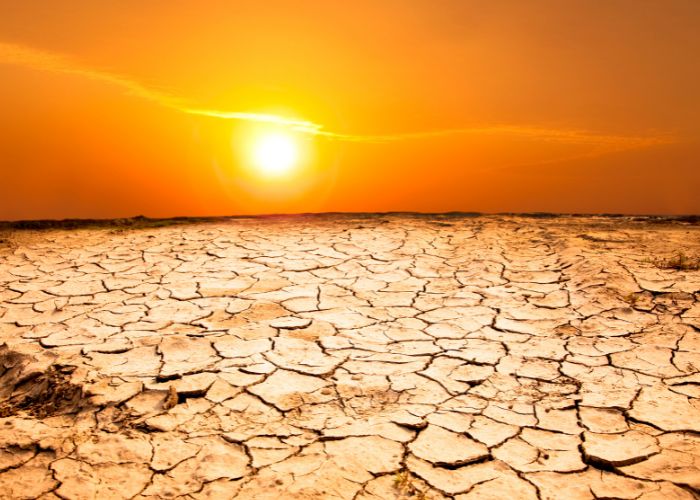MADRID – The World Meteorological Organisation (WMO) warned on Wednesday that the likelihood of an El Niño episode will increase before the end of this year. That could bring unprecedented heat and potentially break global temperature records. But what about Spain?
El Niño is a natural meteorological phenomenon characterised by an increase in ocean temperature associated with changes in the atmosphere. After the cold phase of La Niña, which was unusually persistent, neutral conditions followed in the tropical Pacific, that is, there was no Niño or Niña episode.
However, according to the WMO bulletin, there is a 60% chance that an El Niño episode will be established between May and July 2023, and that percentage rises to 80% for the July to September period. So, what does this mean for Spain?
“Eight warmest years on record”
According to the climate bureau, nothing currently allows us to predict the intensity or duration of the El Niño episode. “We have just experienced the eight warmest years on record, even though the La Niña episode has had a cooling effect over the past three years that has temporarily slowed global warming.
Greater chance of breaking temperature records
The establishment of an El Niño episode could trigger another surge in global warming and increase the likelihood of temperature record-breaking. This was the case in 2016 when there was a very intense episode. This, along with human-induced warming from greenhouse gases, made for the warmest year on record.
“The world must prepare”
“The world should prepare for the formation of an El Niño event, which is often associated with increased heat, drought or precipitation in different parts of the world. It could, on the one hand, alleviate the drought in the Horn of Africa, as well as other effects caused by La Niña. On the other hand, it can also lead to more extreme weather and climate events.”
“This underlines that the United Nations Early Warnings for All initiative is necessary to protect people,” said Professor Taalas. No two El Niño episodes are the same, and their effects depend in part on the time of year. That is why the WMO and the National Meteorological and Hydrological Services (NMHS) will closely monitor developments.
Hurricanes and severe droughts
On average, El Niño occurs in cycles ranging from 2 to 7 years, and episodes usually last between 9 and 12 months. El Niño episodes are usually associated with increased precipitation in parts of southern South America, the southern United States of America, the Horn of Africa, and Central Asia.
Conversely, El Niño can also cause severe drought in Australia, Indonesia and parts of South Asia. During the northern hemisphere summer, warm waters from El Niño can strengthen hurricanes in the central and eastern Pacific while making it more difficult for hurricanes to form in the Atlantic basin.
“Temperature rises in all continental areas”
According to the WMO, “positive temperature anomalies are expected in all continental regions of the northern and southern hemispheres without exception,” the latest bulletin said.
“Very likely”
Recent developments in tropical Pacific oceanic and atmospheric conditions, along with current forecasts and expert assessments, indicate that the onset of an El Niño event will occur early in the second half of 2023, and its continuation throughout the remainder of the six-month forecast period is highly probable.
El Nino and Spain
The state meteorological agency (Aemet) emphasises that it is complex to know the possible effects that El Niño could have on Spain. Indeed, it is difficult to isolate the impact of El Niño on the Spanish climate from other factors, such as seasonal changes or atmospheric variability. Studies suggest that its influence on Europe’s climate is small, although it may increase the likelihood of above-normal temperatures or anticyclonic conditions in winter.
Related post: Number of deaths attributed to heat in Spain tripled
El Tiempo points out that while the effects of El Niño on Spain and Europe are less clear, studies suggest that El Niño could weaken the high mountains of the Azores and the lowlands of Iceland. That could lead to a wetter climate in southern Europe during the winter.
The relationship between El Niño and climate change remains unclear, but some studies suggest that climate change may increase the frequency and intensity of events, which could result in more extreme weather patterns.


